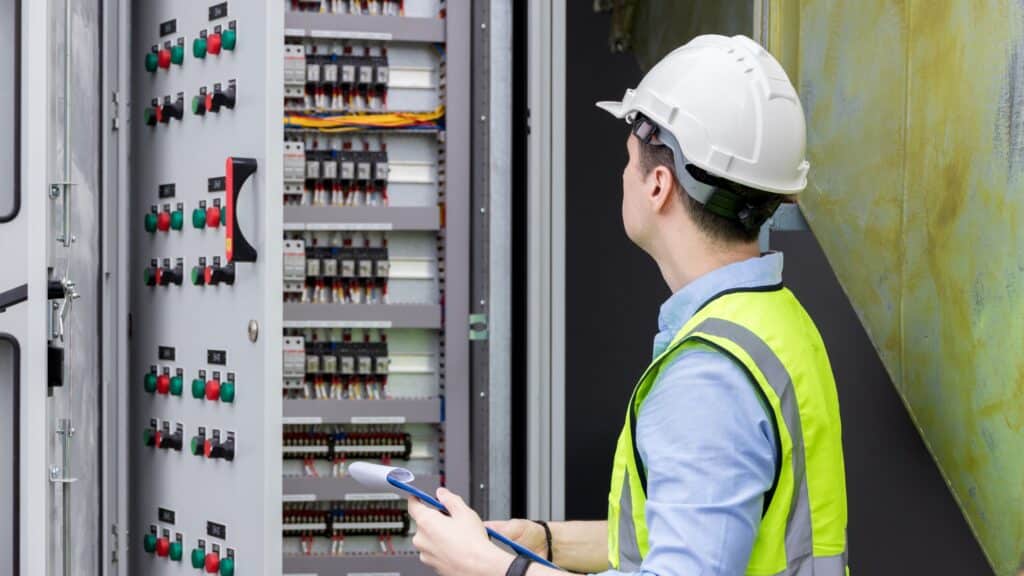In today’s world, where electricity is essential for the operation of a wide range of electronic devices, voltage regulators play a crucial role in ensuring a stable and safe power supply. These devices are essential to protect sensitive equipment from voltage fluctuations, which could irreparably damage it.
There are several types of voltage regulators on the market, each designed to meet specific needs. Below, we will explore some of the most common classifications.

Ferroresonant Voltage Regulators
First of all, ferroresonant voltage regulators use transformers to adjust the output voltage. The transformer works in conjunction with a capacitor to generate an electrical resonance to provide a regulated voltage. These devices are robust and can handle large voltage fluctuations.
The technology of these voltage regulators, have more than 80 years in the market, however, today there are much more efficient models with more current technology. In addition, they tend to be very large and heavy compared to other options, which limits their use in more compact environments.
Electromechanical Voltage Regulators
On the other hand, electromechanical regulators are also on the market. These devices operate by means of mechanisms that move the bearings responsible for adjusting the output voltage. They are robust and ideal for medical, industrial and entertainment environments. They protect laboratory equipment, telecommunication systems, computer equipment, among other robust equipment.
Electronic Voltage Regulators
Electronic voltage regulators are more compact and lighter than their transformer-based counterparts. They use electronic circuitry to regulate the output voltage. They are ideal for sensitive electronic devices that require precise voltage regulation, such as computer equipment, automated lines, industrial equipment or CNC machinery.
Main advantages and disadvantages
The following are the main advantages and disadvantages of these types of voltage regulators.
Ferroresonant Regulator
Advantages:
- Advantages: Stability to varying voltages: they are effective in maintaining a constant voltage output even when there are voltage variations.
- Resistance to disturbances: they have a good response to mains disturbances.
Disadvantages:
- Require frequent adjustments: may need frequent adjustments to adapt to load or grid changes.
- Relatively high cost: may be more expensive to implement and maintain compared to other technologies.
- Low Efficiency: In the resonance process they waste a lot of energy that is emitted as heat.
Electromachanical Regulator
Advantages:
- Robustness: they are usually built with robust mechanical components, which gives them greater strength and durability. This makes them suitable for environments where greater robustness is required.
- Easy maintenance: due to their simpler mechanical design, electromechanical regulators are often easier to maintain and repair. This can reduce costs over time and facilitate maintenance operations.
- Lower initial cost: compared to some electronic regulators, electromechanical regulators can have a lower initial cost.
Disadvantages:
- Large dimensions: in general, the design of these regulators is usually large and may not be compatible with the space available at the installation site.
- Sensitivity to other electrical disturbances: they may be more sensitive to other electrical disturbances in the power grid, such as electrical noise or surges. To mitigate these damages, this solution can be combined with a surge suppressor.

Electronic Regulator
Advantages:
- Higher efficiency: they are typically more efficient in terms of energy consumption. Their ability to adjust output precisely means less energy is wasted compared to other regulators.
- High Accuracy: their technology allows precise voltage control, ensuring a more stable and accurate output. This is critical in sensitive applications that require a stable power supply.
- Adaptability: Many electronic regulators are programmable and can be adapted to specific application requirements. This makes them versatile and capable of meeting a variety of needs in complex electrical systems.
Disadvantages:
- Sensitivity to other electrical disturbances: they can be more sensitive to other electrical disturbances in the power grid, such as electrical noise or surges. To mitigate these damages, this solution can be combined with a surge suppressor.
- Higher initial cost: depending on the model and brand, they tend to have a higher initial cost compared to electromechanical regulators. However, it is a necessary investment for the protection of your equipment.
Which regulator should you choose?
The choice between these regulators will depend on the specific needs of the application. In addition, factors such as energy efficiency, load capacity and device size must be taken into account.
In many cases, modern electronic technology offers significant advantages in terms of performance and accuracy. However, in order to make the right decision on which regulator you need it is important to know the following data of the place where it is to be installed: Voltage, Frequency, Current, Star or Delta connection. These data are what define the voltage regulator models.
Regardless of the type, a reliable voltage regulator is essential to protect the integrity and life of electronic equipment in a world where electricity is ubiquitous.
